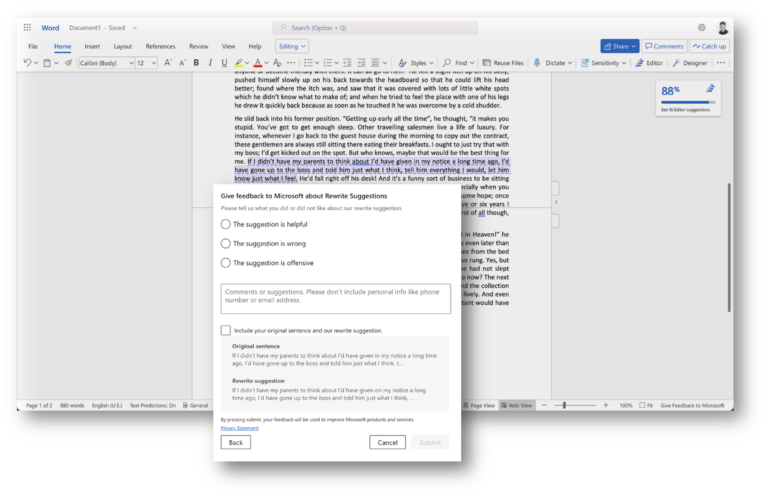Problem
User feedback is needed to identify problematic or inappropriate system outputs.
Solution
Implement a user-feedback mechanism at each item or instance of system output, enabling the user to flag output that is problematic, wrong, offensive, biased, or otherwise inappropriate.
Leverage user feedback to identify biased, offensive, or otherwise inappropriate system outputs.
Use when
- The system outputs are separate items or instances that can be rated individually.
- The system outputs are subject to errors that result in problematic, wrong, offensive, biased, or otherwise inappropriate items or instances.
How
Decide what type of feedback to collect from the user. Options include:
- Binary ratings to flag an item as inappropriate.
- Closed-ended options for the user to choose reasons why the item or instance is inappropriate.
- Open-ended text input for the user to explain why the item or instance is inappropriate.
Decide how to use feedback. Keep in mind that user feedback on inappropriate system outputs may represent religious beliefs that propagate, rather than mitigate, undesirable social biases—for example, some people might find images of same-sex couples offensive. Create a policy for acting on user feedback that considers local social norms (see Guideline 5) and mitigates undesirable social biases (see Guideline 6).
Ensure the information collected is both meaningful to the user and can be leveraged for system improvement.
Make the feedback mechanism available for each item or instance of system output.
Consider how to convey to the user that the feedback was received, how it will be used, and whether the user experience changes immediately after giving feedback (see Guideline 16).
For open-ended feedback that may not be machine-interpretable, put a process in place for interpreting and using the feedback to improve the system. Consider prioritizing feedback that flags inappropriate system outputs to ensure it is acted upon in a timely manner.
User benefits
- Reduces user burden of providing feedback to the AI system.
- Gives the user a voice.
- May support personalization.
- May improve the experience for all system users.
- Feedback about system performance and user preferences can improve user experience over time (see Guideline 13).
Common pitfalls
- It’s unclear to the user that they can provide feedback to the AI system.
- It’s unclear to the user how to provide feedback to the AI system.
- It’s unclear to the user what the feedback options mean.
- It’s unclear to the user what specific instance or item the feedback is about.
- It’s unclear to the user how their feedback will be used to improve the AI system.
- In some contexts, such as driving a car, it might be inefficient, dangerous, or disruptive for the user to provide feedback to the AI system.
Notes
Explicit feedback is information the user intentionally provides for system improvement.
Implicit feedback is information the system garners from user actions to improve itself.




